How to Make the Most Out of Your Self-Defense Training Sessions?
Self-defense training is not just about learning how to throw a punch or escape a hold; it’s about building confidence, awareness, and the ability to respond effectively in a variety of situations. Whether you’re a beginner or someone looking to sharpen your skills, maximizing your training sessions can make a world of difference. So, how can you ensure that each class leaves you feeling empowered and ready? Let’s dive into some effective strategies to enhance your self-defense training experience!
Establishing specific, measurable goals for your self-defense training can significantly enhance your focus and motivation. Think about what you want to achieve—do you want to learn a specific technique, improve your fitness level, or perhaps build your confidence in handling confrontations? Setting these targets will not only give you a roadmap for your training but also allow you to track your progress over time. For example, if your goal is to master a particular move, you can break it down into smaller steps, making it easier to stay committed to your practice.
The environment in which you train plays a crucial role in your learning experience. Selecting a supportive, safe, and well-equipped space can elevate your performance and comfort level during practice. A good training environment should have ample space, proper mats, and, most importantly, a positive atmosphere. Surrounding yourself with encouraging peers and a motivating instructor can significantly impact your learning curve.
A skilled instructor can provide invaluable feedback, tailored techniques, and safety measures. Researching and selecting a qualified mentor is essential for effective self-defense training. But how do you find the right one? Look for someone with a solid background in self-defense, preferably with certifications and experience in teaching. It’s also beneficial to observe a class before committing—this way, you can gauge their teaching style and see if it resonates with you.
Understanding an instructor's background, certifications, and experience helps ensure you're receiving quality training that aligns with your self-defense goals and needs. Don’t hesitate to ask potential instructors about their qualifications. After all, you’re investing your time and safety into their hands!
Developing a positive relationship with your instructor fosters open communication, making it easier to ask questions and receive constructive feedback throughout your training. The more comfortable you feel, the more likely you are to engage fully and learn effectively. Remember, your instructor is there to help you grow, so don’t be shy!
Practicing self-defense techniques in realistic scenarios prepares you for actual encounters. Integrating situational drills into your training can enhance your reaction time and decision-making skills. For instance, simulating a surprise attack can help you learn how to respond under pressure. These drills might feel intense, but they’re incredibly valuable in building your instinctive reactions!
Consistent review of techniques is vital for retention and mastery. Scheduling regular practice sessions allows you to refine your skills and build muscle memory, crucial for effective self-defense. Consider keeping a training journal where you can jot down what you’ve learned in each session. This not only helps reinforce your memory but also allows you to track your growth over time.
Recording your training sessions for later review can provide insights into your technique and areas for improvement. Watching yourself in action can be eye-opening; you might notice things you didn’t realize you were doing wrong or right! This targeted practice can significantly enhance your performance and help you correct mistakes before they become habits.
Partner drills promote teamwork and allow you to practice techniques against a live opponent, which helps simulate real-life situations and improves your adaptability in self-defense scenarios. Working with a partner not only makes practice more dynamic but also provides an opportunity to learn from each other’s strengths and weaknesses. Plus, it’s more fun to train with someone else!
Physical fitness is a key component of effective self-defense. Incorporating strength, flexibility, and endurance training into your routine enhances your overall performance and resilience during self-defense situations. A well-rounded fitness regimen will not only improve your self-defense skills but also boost your confidence in your physical capabilities.
Cardiovascular fitness improves your stamina, allowing you to maintain energy levels during extended training sessions or real-life encounters. Think of your heart as the engine that powers your body; the better conditioned it is, the more efficiently you can perform when it matters most!
Building strength enhances your ability to execute techniques effectively and increases your confidence in physical confrontations. Imagine trying to perform a powerful throw without the necessary muscle; it simply won’t work! Therefore, incorporating strength training into your self-defense regimen is crucial.
- How long does it take to become proficient in self-defense? Proficiency varies per individual, but consistent training over several months will yield noticeable improvements.
- Do I need to be physically fit to start self-defense training? Not at all! Many self-defense classes cater to all fitness levels and focus on building your skills gradually.
- Can self-defense training help with confidence? Absolutely! Many practitioners report increased self-esteem and confidence as they learn and master new techniques.

Setting Clear Goals
This article explores effective strategies to enhance your self-defense training, ensuring you maximize your learning and build confidence in your abilities while preparing for real-life situations.
Establishing specific, measurable goals for your self-defense training can significantly enhance your focus and motivation. Imagine you're on a road trip without a destination; you might enjoy the ride, but you'll end up lost and confused. Similarly, in self-defense training, having clear objectives not only provides direction but also allows you to track your progress and stay committed to your practice.
When setting goals, consider breaking them down into short-term and long-term objectives. Short-term goals could be as simple as mastering a particular technique or increasing your stamina. Long-term goals might involve achieving a certain belt level or being able to handle multiple attackers. By having a mix of both, you can celebrate small victories while keeping an eye on the bigger picture.
Here are some examples of goals you might set for yourself:
- Short-Term Goals:
- Learn three new self-defense techniques this month.
- Attend at least two training sessions per week.
- Improve your flexibility to execute kicks better.
- Long-Term Goals:
- Achieve a blue belt in your chosen martial art within a year.
- Participate in a self-defense workshop or seminar.
- Develop the ability to de-escalate a potential confrontation.
Consistency is key when working towards your goals. Consider keeping a training journal where you can jot down your progress, reflect on what worked and what didn’t, and adjust your goals as necessary. This not only helps you stay accountable but also provides a record of your journey, which can be incredibly motivating.
Lastly, don’t be afraid to share your goals with your instructor or training partners. They can offer support, advice, and even accountability, making your self-defense training not just a personal journey, but a shared experience that enhances your learning.
Q: How often should I set new goals for my self-defense training?
A: It's beneficial to review your goals every few months. This allows you to adjust them based on your progress and any new skills you've acquired.
Q: What if I don't meet my goals?
A: Don't be discouraged! Use it as a learning opportunity. Reflect on what obstacles you faced and adjust your approach for the next set of goals.
Q: Can I set goals that are not directly related to techniques?
A: Absolutely! Goals can include aspects like improving your mental resilience, understanding self-defense laws, or even enhancing your fitness level, all of which contribute to your overall self-defense capability.
Choosing the Right Training Environment
When it comes to self-defense training, the importance of your training environment cannot be overstated. Imagine trying to learn how to swim in a kiddie pool versus a vast ocean; the experience, challenges, and outcomes would be vastly different. The same applies to self-defense training. A supportive and well-equipped environment can significantly enhance your learning experience, allowing you to focus on mastering techniques without distractions or safety concerns.
First and foremost, safety should be your top priority. Look for a training space that is free from hazards, such as uneven flooring or obstacles that could lead to injuries. A clean, spacious area gives you the freedom to move around and practice techniques without fear of tripping or falling. Additionally, consider whether the environment allows for various training methods, such as partner drills, solo practice, or sparring sessions.
Another factor to consider is the availability of equipment. A well-equipped training facility should have essential tools like mats, punching bags, and protective gear. These resources not only make your training safer but also more effective. For instance, using a punching bag can help you practice striking techniques, while mats provide a safe surface for falls and throws. If you're training in a gym or dojo, make sure it has the necessary resources to support your learning.
Moreover, the atmosphere of the training environment plays a crucial role in your motivation and comfort level. A positive and encouraging atmosphere can boost your confidence and make you feel more at ease during practice. Look for a place where instructors and fellow students foster a sense of community, support, and camaraderie. This kind of environment can make a significant difference in your training experience.
Lastly, consider the location of your training environment. Accessibility is key; if you struggle to get to your training sessions due to distance or traffic, your motivation may wane over time. Ideally, find a location that is convenient for you, whether it's close to home, work, or school. This way, you can easily incorporate self-defense training into your routine without it becoming a burden.
In summary, choosing the right training environment is essential for maximizing your self-defense training. Focus on safety, equipment availability, atmosphere, and accessibility to create a conducive learning space that enhances your skills and confidence. After all, the right environment can be the difference between merely practicing and truly mastering self-defense techniques.
- What should I look for in a self-defense training facility? Look for safety, available equipment, a positive atmosphere, and convenience.
- How important is the instructor's role in the training environment? A qualified instructor can significantly enhance your learning experience by providing guidance and feedback.
- Can I train effectively in a non-traditional environment? Yes, as long as you prioritize safety and have access to necessary resources, you can train effectively in various settings.
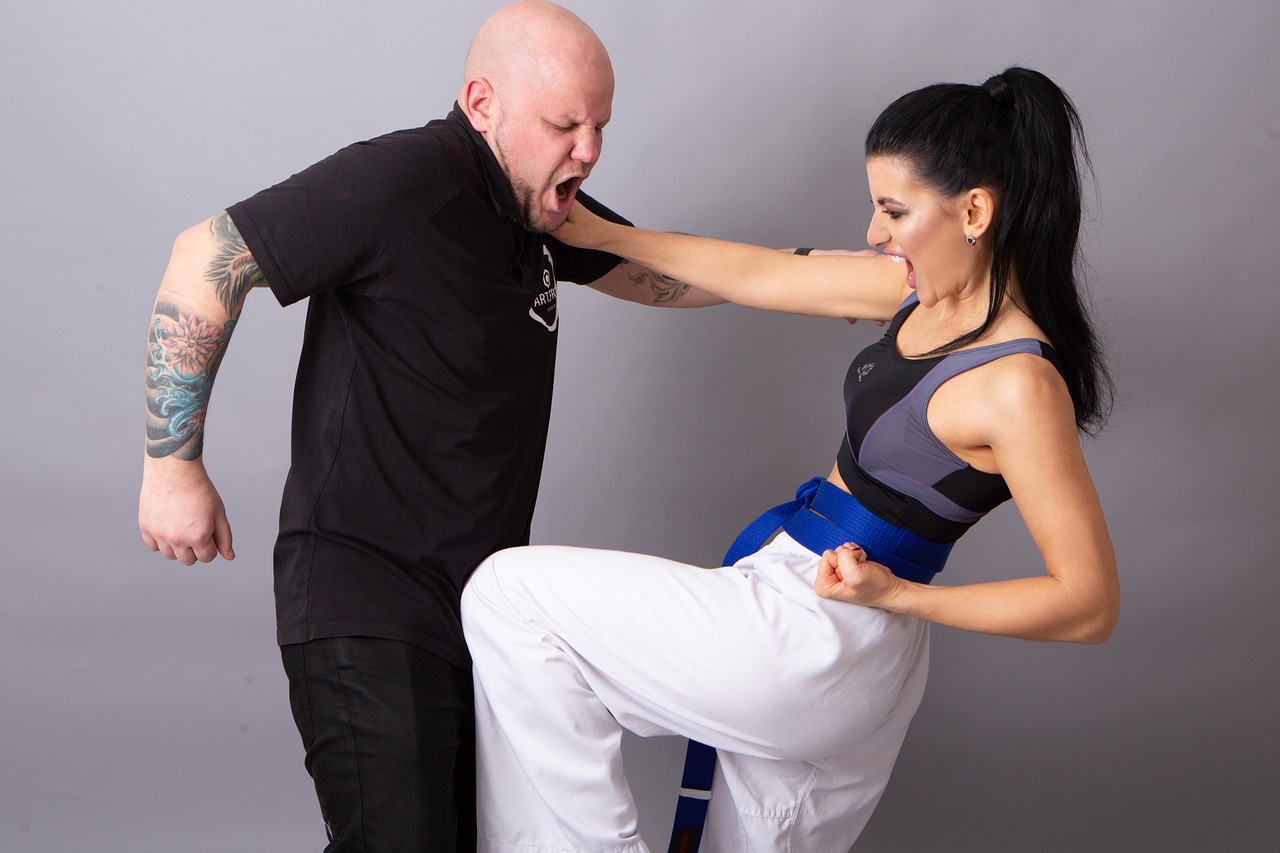
Finding a Qualified Instructor
When it comes to self-defense training, one of the most crucial steps is . A skilled instructor can make all the difference in your learning experience, providing you with not just techniques, but also the confidence and safety measures you need. Imagine trying to navigate a maze without a map; that's what training without a good instructor can feel like. Here are some important factors to consider when searching for the right mentor:
- Experience and Background: Look for instructors who have a solid background in self-defense or martial arts. They should have years of experience and a proven track record of teaching.
- Certifications: Check if the instructor holds any relevant certifications or has completed formal training programs. This ensures they are qualified to teach self-defense techniques safely and effectively.
- Teaching Style: Every instructor has a unique approach to teaching. Some may be more hands-on, while others focus on theory. It’s essential to find someone whose teaching style resonates with you.
- Reputation: Research reviews and testimonials from former students. A good instructor will have positive feedback and a reputation for producing competent self-defense practitioners.
Once you've narrowed down your options, it's a good idea to attend a few trial classes. This will give you a feel for the instructor's teaching style and how well they communicate their knowledge. Remember, a great instructor not only teaches techniques but also inspires you to push your limits and believe in your own abilities.
Additionally, building a rapport with your instructor is vital. A strong relationship fosters open communication, which is essential for your growth. You should feel comfortable asking questions and seeking clarification on techniques. If you feel intimidated or uneasy, it might hinder your learning process.
In summary, finding a qualified instructor is not just about checking off a list of qualifications. It's about finding someone who can guide you through your self-defense journey, helping you to build not only skills but also confidence. So take your time, do your research, and choose wisely—your safety may depend on it!

Assessing Instructor Credentials
When it comes to self-defense training, the importance of a qualified instructor cannot be overstated. You want to ensure that the person guiding you through the intricacies of self-defense has the right credentials and experience. But how do you go about assessing these credentials? First and foremost, it’s essential to look into their educational background. Instructors should ideally have formal training in martial arts or self-defense techniques, complemented by certifications from recognized organizations. This foundational knowledge is crucial because it ensures that they are not just teaching from a place of opinion but from a well-rounded understanding of the discipline.
Next, consider their teaching experience. An instructor with years of experience is likely to have encountered a variety of students and scenarios, allowing them to adapt their teaching methods to suit different learning styles. Ask about their history in teaching self-defense. Have they worked with beginners? Do they have experience in coaching advanced practitioners? This information can give you valuable insights into how they might cater to your specific needs.
Additionally, it's wise to check for certifications from reputable self-defense organizations. These certifications often require instructors to undergo rigorous training and testing, ensuring they are well-versed in effective techniques and safety protocols. You can ask for documentation or even look them up online to verify their credentials. Here’s a quick overview of what to look for:
| Credential Type | Description |
|---|---|
| Educational Background | Formal training in martial arts or self-defense |
| Teaching Experience | Years of instructing students in self-defense |
| Certifications | Accreditations from recognized self-defense organizations |
Lastly, don’t hesitate to ask for references or testimonials from former students. Hearing from others about their experiences with the instructor can provide valuable insight into their teaching style and effectiveness. A good instructor will have a track record of satisfied students who can vouch for their methods. Remember, the goal is to find someone who not only has the right credentials but also resonates with you on a personal level. A positive rapport can significantly enhance your learning experience and build your confidence as you progress in your self-defense journey.
- What qualifications should a self-defense instructor have?
Look for formal training, teaching experience, and certifications from recognized organizations. - How can I verify an instructor's credentials?
You can ask for documentation, check their background online, or request references from former students. - Why is it important to assess an instructor's experience?
Experience allows instructors to adapt their teaching methods and provide tailored guidance to meet individual needs.
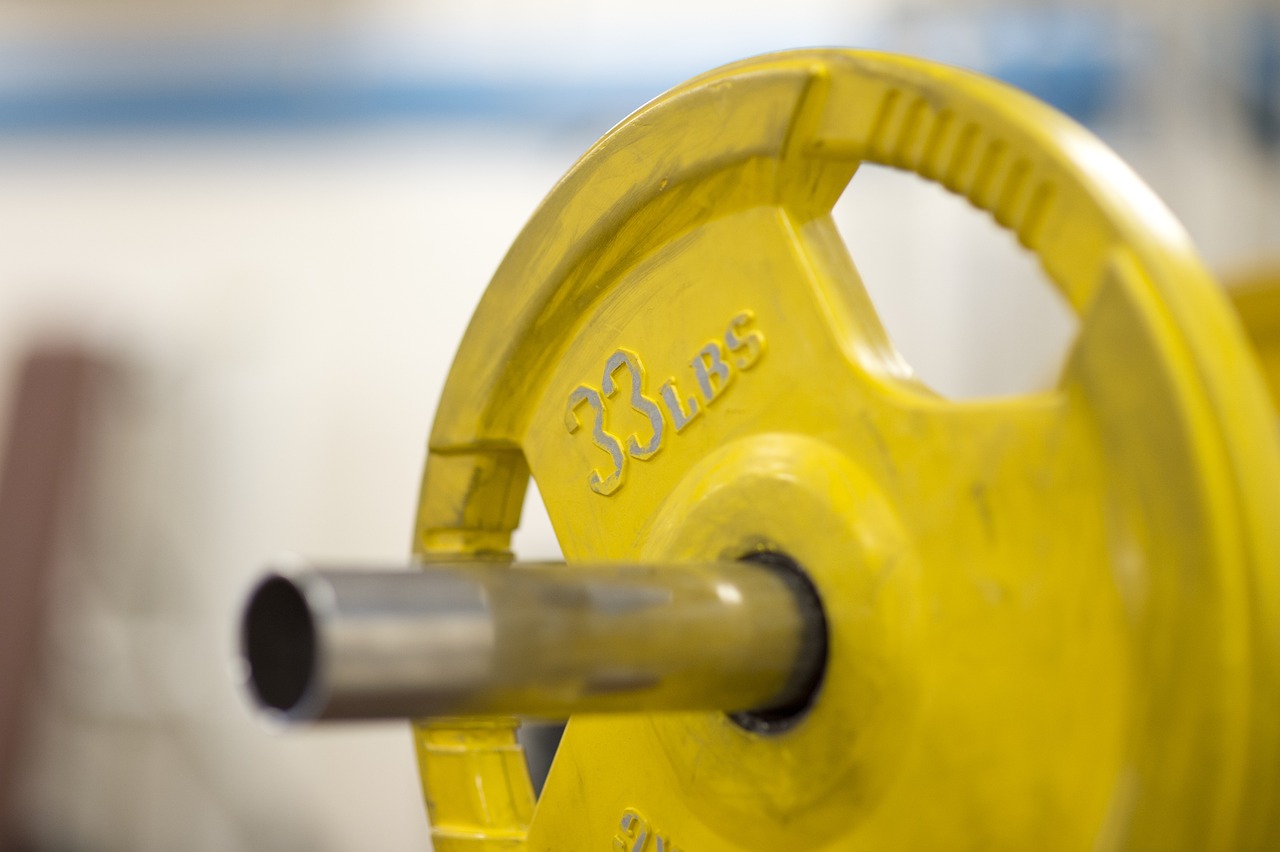
Building a Rapport with Your Instructor
Building a strong rapport with your self-defense instructor is not just beneficial; it’s essential for your growth and confidence in training. Think of your instructor as a guide on your self-defense journey. A good relationship can create a safe space where you feel comfortable asking questions, expressing concerns, and sharing your progress. When you have a solid connection, it fosters open communication, which is crucial for effective learning.
To cultivate this rapport, consider the following strategies:
- Be Open and Honest: Share your goals, fears, and previous experiences with your instructor. This transparency allows them to tailor their teaching methods to suit your needs.
- Ask Questions: Don’t hesitate to ask for clarification or further explanation on techniques. An engaged student is often more successful than one who silently struggles.
- Provide Feedback: Just as you receive feedback from your instructor, share your thoughts on their teaching style. This mutual exchange can enhance the learning experience for both parties.
- Show Appreciation: A simple thank you can go a long way. Acknowledge the effort your instructor puts into your training; it reinforces positive behavior and encourages them to invest even more in your progress.
Moreover, participating in group classes can also help you build a rapport not just with your instructor but with fellow students as well. This camaraderie can create a supportive environment that enhances motivation and learning. Remember, self-defense is not just about techniques; it's about building a community where everyone encourages each other to improve. So, don’t shy away from engaging with your classmates and instructor alike!
In conclusion, a strong instructor-student relationship is a cornerstone of effective self-defense training. By being open, communicative, and appreciative, you can create an environment that promotes growth, confidence, and skill mastery. As you progress, you'll find that this rapport not only enhances your training experience but also prepares you better for real-life situations.
Here are some common questions regarding building rapport with your instructor:
- Why is it important to build a rapport with my instructor? A good rapport fosters communication, which is essential for effective learning and personal growth.
- How can I effectively communicate with my instructor? Be open about your goals, ask questions, and provide feedback. This two-way communication enhances the learning experience.
- What if I don’t feel comfortable with my instructor? If you feel uncomfortable, it’s important to address your concerns. You might consider discussing them with your instructor or seeking a different mentor.

Incorporating Realistic Scenarios
This article explores effective strategies to enhance your self-defense training, ensuring you maximize your learning and build confidence in your abilities while preparing for real-life situations.
Establishing specific, measurable goals for your self-defense training can significantly enhance your focus and motivation, allowing you to track your progress and stay committed to your practice.
The environment in which you train plays a crucial role in your learning experience. Selecting a supportive, safe, and well-equipped space can elevate your performance and comfort level during practice.
A skilled instructor can provide invaluable feedback, tailored techniques, and safety measures. Researching and selecting a qualified mentor is essential for effective self-defense training.
Understanding an instructor's background, certifications, and experience helps ensure you're receiving quality training that aligns with your self-defense goals and needs.
Developing a positive relationship with your instructor fosters open communication, making it easier to ask questions and receive constructive feedback throughout your training.
Practicing self-defense techniques in realistic scenarios is like preparing for a play before the big performance—you want to know your lines and actions inside out. By integrating situational drills into your training, you can enhance your reaction time and decision-making skills, which are vital in real-life encounters. Imagine finding yourself in a tense situation; your body and mind need to respond instinctively. This is where realistic training comes into play.
Consider the following aspects when incorporating realistic scenarios into your sessions:
- Variety of Situations: Train in different environments—urban areas, parks, or even confined spaces. Each setting presents unique challenges and requires different responses.
- Role-Playing: Engage in role-playing exercises where one partner acts as the aggressor and the other as the defender. This helps simulate the unpredictability of real-life confrontations.
- Stress Inoculation: Introduce stressors during training, such as time constraints or distractions, to mimic the pressure of actual situations. This can enhance your ability to think clearly under pressure.
By practicing these realistic scenarios, you not only build your technical skills but also develop a mental framework for dealing with unexpected challenges. Remember, the goal is to create muscle memory and a mental map that will guide you when it matters most. So, next time you step onto the training floor, think of it as your stage—where every move counts and every scenario prepares you for the real world.
Consistent review of techniques is vital for retention and mastery. Scheduling regular practice sessions allows you to refine your skills and build muscle memory, crucial for effective self-defense.
Recording your training sessions for later review can provide insights into your technique and areas for improvement, allowing for more targeted practice and enhanced performance.
Partner drills promote teamwork and allow you to practice techniques against a live opponent, which helps simulate real-life situations and improves your adaptability in self-defense scenarios.
Physical fitness is a key component of effective self-defense. Incorporating strength, flexibility, and endurance training into your routine enhances your overall performance and resilience during self-defense situations.
Cardiovascular fitness improves your stamina, allowing you to maintain energy levels during extended training sessions or real-life encounters, ensuring you can respond effectively when needed.
Building strength enhances your ability to execute techniques effectively and increases your confidence in physical confrontations, making it a crucial aspect of your self-defense training regimen.
Q1: How often should I practice self-defense techniques?
A1: It's recommended to practice at least 2-3 times a week to build and maintain your skills effectively.
Q2: Do I need special equipment for self-defense training?
A2: While some techniques may require training pads or protective gear, many can be practiced with minimal equipment.
Q3: Can self-defense training help with confidence?
A3: Absolutely! Self-defense training not only teaches you techniques but also empowers you mentally, boosting your confidence in handling difficult situations.
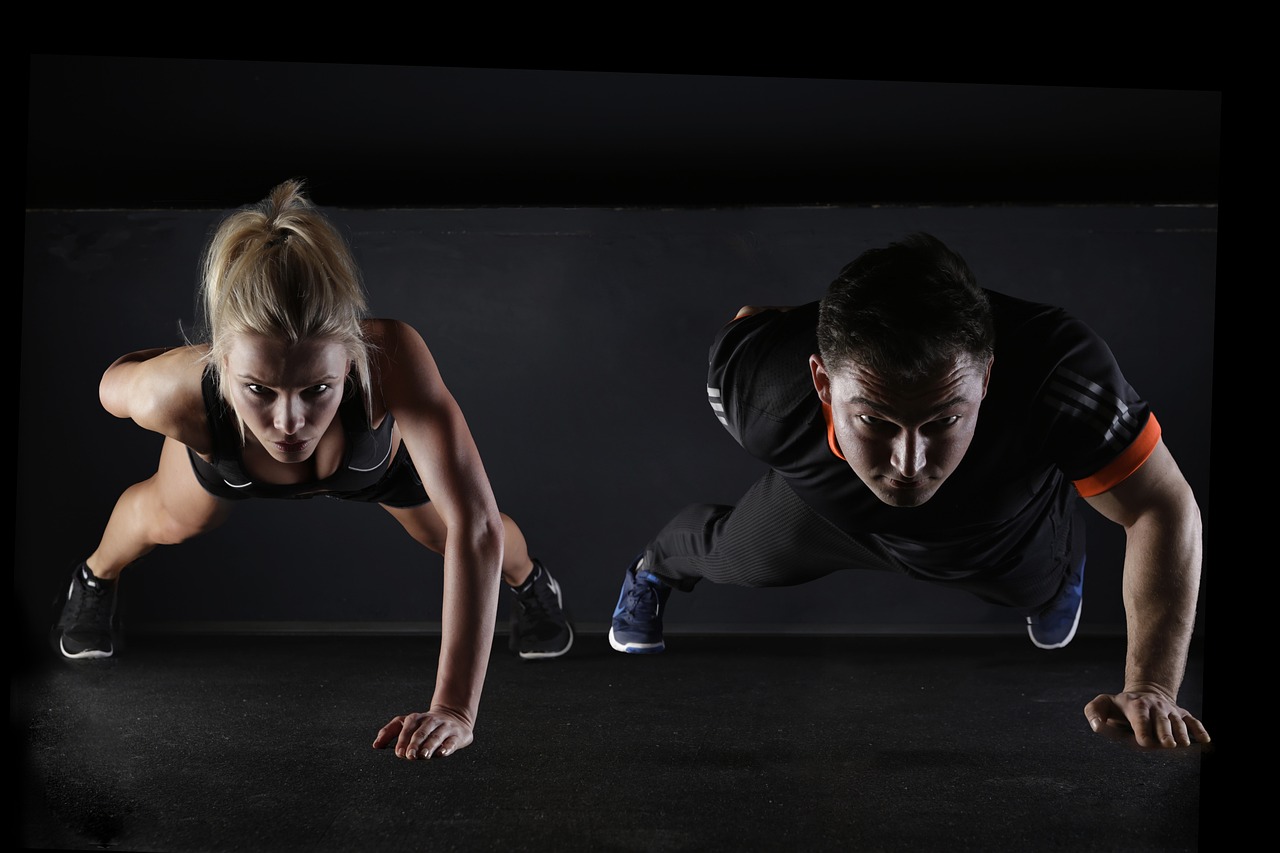
Regularly Reviewing Techniques
When it comes to mastering self-defense, consistency is key. Regularly reviewing techniques is not just about repetition; it's about reinforcing your skills and ensuring that your muscle memory is sharp. Think of it like playing a musical instrument—if you don’t practice regularly, you’ll lose your touch. The same goes for self-defense. By incorporating a structured review process into your training routine, you can solidify your understanding and execution of various techniques.
One effective way to approach this is to set aside specific times for technique review. For instance, you might dedicate the first 15 minutes of each training session solely to revisiting the techniques you learned previously. This not only warms you up but also helps you identify areas that need improvement. During these review sessions, focus on the following:
- Form and Technique: Are you executing the moves correctly? Pay attention to your posture, stance, and movements.
- Speed and Precision: Work on increasing your speed without compromising accuracy. This balance is crucial in self-defense.
- Application: Visualize real-life scenarios where you might need to use these techniques. This mental rehearsal can enhance your readiness.
Another effective method is to partner up with a training buddy. Practicing techniques together allows for immediate feedback and a chance to observe each other’s form. You can challenge each other to improve by incorporating variations or adding resistance, simulating real-life situations. Remember, the goal is not just to memorize moves but to understand their application in various contexts.
Moreover, video analysis can be a game-changer. Recording your practice sessions provides you with a visual reference to assess your performance. Watching yourself in action can reveal nuances in your technique that you might not feel during practice. You can identify areas where you excel and aspects that require more attention. This self-analysis fosters a deeper understanding of your strengths and weaknesses, allowing you to tailor your training effectively.
Incorporating these regular reviews into your training regimen will not only enhance your skills but also boost your confidence. As you see improvement over time, you'll feel more prepared for any situation that may arise. Remember, self-defense is not just about knowing how to react; it's about feeling confident in your ability to protect yourself. So, take the time to review, refine, and reinforce your techniques regularly!
Q: How often should I review my self-defense techniques?
A: Ideally, you should review your techniques at the beginning of each training session. Consistency helps reinforce your skills.
Q: Can I practice self-defense techniques at home?
A: Yes! Practicing at home is a great way to reinforce your skills. Just ensure you have enough space and a safe environment to avoid injuries.
Q: What if I forget a technique during practice?
A: It's normal to forget techniques, especially if you're learning new ones. Don't hesitate to ask your instructor for a refresher or consult your training materials.
Q: Is it beneficial to record my training sessions?
A: Absolutely! Video analysis can provide valuable insights into your technique and help you identify areas for improvement.
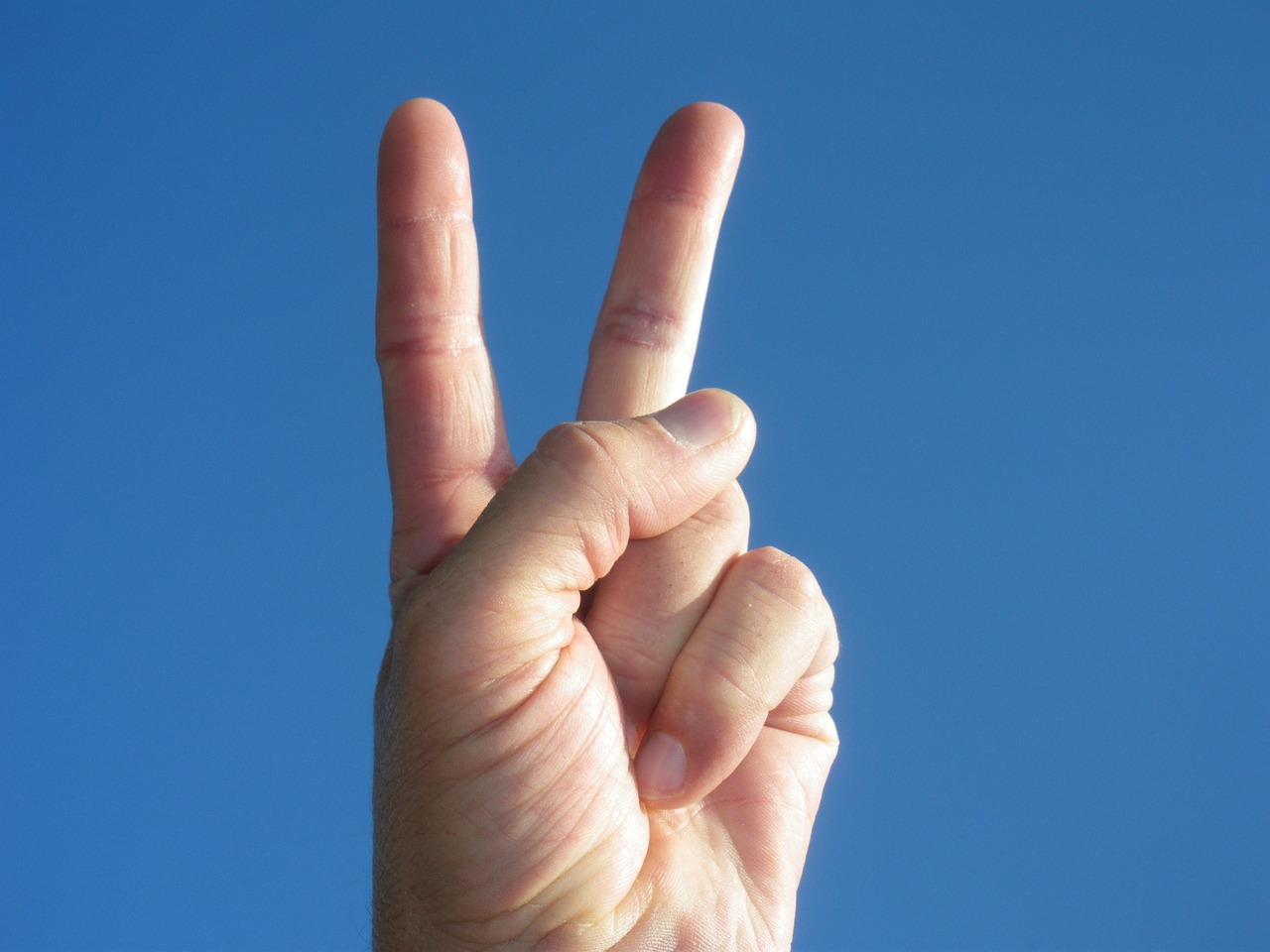
Utilizing Video Analysis
In today's digital age, video analysis has become an invaluable tool for enhancing self-defense training. Imagine being able to watch yourself in action, dissecting every move and technique as if you were your own coach. This method not only boosts your learning curve but also provides insights that are often missed in real-time practice. By recording your training sessions, you can step back and evaluate your performance critically.
When you review footage of your training, you might be surprised by what you see. Perhaps you notice a technique that needs refinement or a stance that could be more stable. These observations allow you to make targeted adjustments to your practice, leading to significant improvements over time. Furthermore, video analysis can help highlight your strengths, giving you a confidence boost as you see your progress unfold.
To make the most out of video analysis, consider the following steps:
- Record Regularly: Make it a habit to record your sessions. This consistency will provide a wealth of material to analyze.
- Focus on Specific Techniques: During your review, concentrate on particular skills or techniques that you want to improve. This focused approach will yield better results.
- Seek Feedback: Share your videos with your instructor or training partners. Their insights can provide a new perspective and highlight areas for improvement that you might have overlooked.
Moreover, consider using video analysis software or apps that can slow down footage, allowing you to scrutinize movements frame by frame. Many of these tools also offer features to compare your performance against professional techniques or even your past recordings. This kind of detailed analysis can be a game-changer in your self-defense training journey.
In conclusion, integrating video analysis into your self-defense training is not just a smart strategy; it’s a game-changing approach that can elevate your skills and confidence. By taking the time to review and reflect on your techniques, you set yourself up for continuous improvement and greater readiness for real-life situations.
If you're still curious about how to effectively utilize video analysis in your self-defense training, here are some frequently asked questions that might help clarify your doubts:
- How often should I record my training sessions? Aim to record at least once a week to track your progress over time.
- What equipment do I need for video analysis? A smartphone or a camera with good video quality is sufficient. Tripods can help stabilize your shots.
- Can I analyze my sparring sessions? Absolutely! Sparring sessions provide a realistic context for evaluating your techniques and reactions.
- What should I focus on when reviewing my videos? Look for areas such as technique execution, footwork, and reaction times. Pay attention to both strengths and weaknesses.
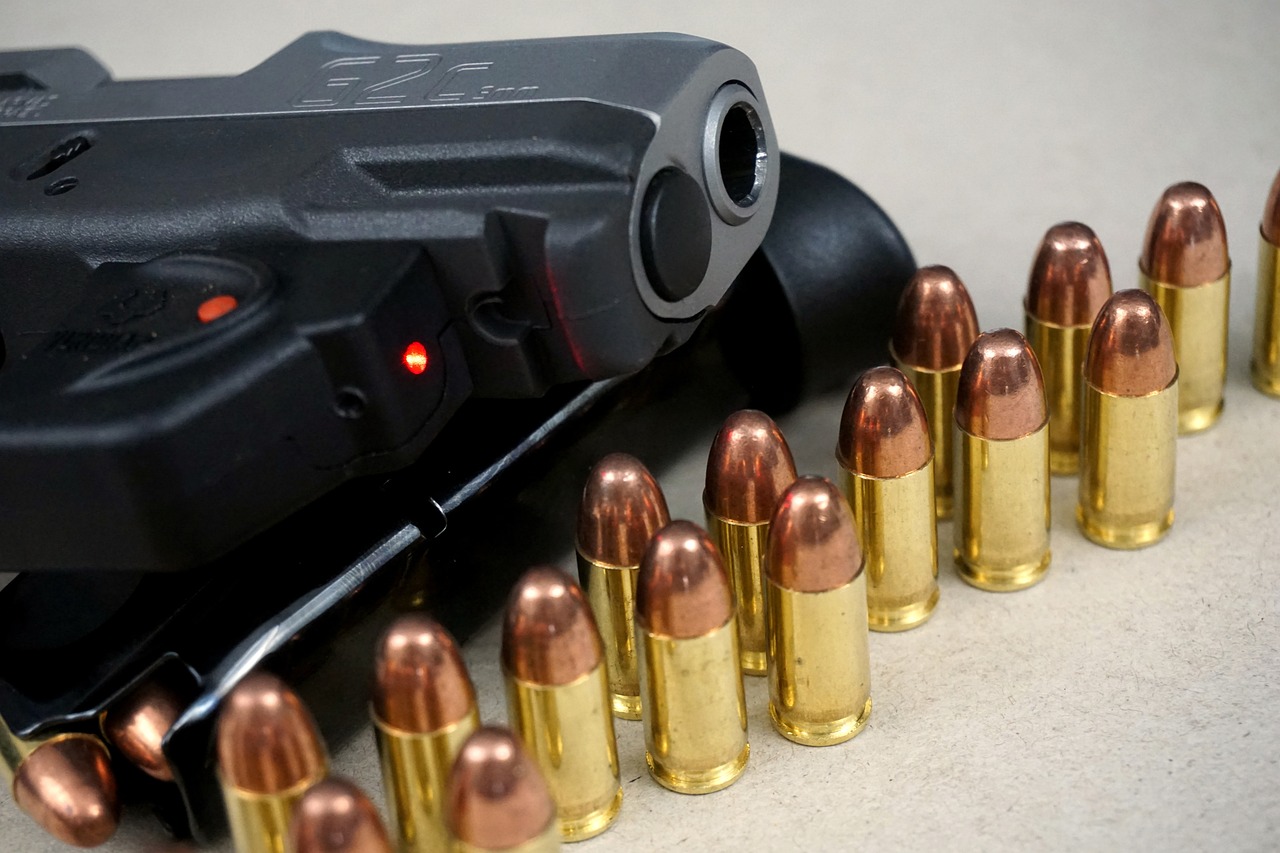
Engaging in Partner Drills
When it comes to self-defense training, one of the most effective methods to sharpen your skills is by . These drills are not just about practicing techniques; they are about simulating real-life situations where you might need to defend yourself. Think of it as a dance where both partners must be in sync, understanding each other's movements and reactions. By working with a partner, you can practice your techniques against a live opponent, which adds an element of unpredictability that a solo drill simply can't replicate.
During partner drills, you can explore various scenarios that you might face in a confrontation. Whether it's practicing how to escape a hold, counter an attack, or execute a defensive maneuver, having a partner allows you to test your skills in a controlled environment. This not only enhances your physical abilities but also builds your mental resilience. You learn to think on your feet, adapt to changing circumstances, and make quick decisions under pressure.
Moreover, partner drills can be tailored to suit your skill level and specific self-defense goals. For instance, if you're a beginner, you might start with basic techniques such as blocking or evading strikes. As you progress, you can move on to more advanced drills that involve grappling or striking. This gradual increase in complexity helps in building confidence, as you can see your improvement over time. In fact, many martial arts schools emphasize the importance of partner drills as they foster a sense of camaraderie and teamwork among students.
However, it's important to approach partner drills with a mindset focused on safety and respect. Always communicate with your partner about what techniques you will be practicing and agree on a level of intensity that feels comfortable for both of you. This not only prevents injuries but also creates a more enjoyable training experience. In essence, partner drills are a crucial component of self-defense training that can significantly enhance your skills and confidence.
- What are partner drills?
Partner drills are exercises where two individuals practice self-defense techniques against each other, simulating real-life confrontation scenarios. - Why are partner drills important?
They help improve reaction times, adaptability, and the ability to execute techniques under pressure. - How can I ensure safety during partner drills?
Always communicate with your partner about the techniques being used and agree on the level of intensity to prevent injuries. - Can I practice partner drills with anyone?
It's best to practice with someone who has a similar skill level or experience in self-defense to ensure a productive training session.

Staying Physically Fit
This article explores effective strategies to enhance your self-defense training, ensuring you maximize your learning and build confidence in your abilities while preparing for real-life situations.
Establishing specific, measurable goals for your self-defense training can significantly enhance your focus and motivation, allowing you to track your progress and stay committed to your practice.
The environment in which you train plays a crucial role in your learning experience. Selecting a supportive, safe, and well-equipped space can elevate your performance and comfort level during practice.
A skilled instructor can provide invaluable feedback, tailored techniques, and safety measures. Researching and selecting a qualified mentor is essential for effective self-defense training.
Understanding an instructor's background, certifications, and experience helps ensure you're receiving quality training that aligns with your self-defense goals and needs.
Developing a positive relationship with your instructor fosters open communication, making it easier to ask questions and receive constructive feedback throughout your training.
Practicing self-defense techniques in realistic scenarios prepares you for actual encounters. Integrating situational drills into your training can enhance your reaction time and decision-making skills.
Consistent review of techniques is vital for retention and mastery. Scheduling regular practice sessions allows you to refine your skills and build muscle memory, crucial for effective self-defense.
Recording your training sessions for later review can provide insights into your technique and areas for improvement, allowing for more targeted practice and enhanced performance.
Partner drills promote teamwork and allow you to practice techniques against a live opponent, which helps simulate real-life situations and improves your adaptability in self-defense scenarios.
Physical fitness is a key component of effective self-defense. It's not just about knowing the moves; it's about having the strength and stamina to execute them when it counts. Imagine being in a situation where you need to defend yourself. If you're out of breath or too weak to react, all that training might go to waste. Therefore, incorporating a well-rounded fitness routine into your self-defense training is essential.
To really get the most out of your training, consider these aspects of physical fitness:
- Strength Training: Building muscle not only improves your ability to execute techniques but also boosts your confidence. When you know you're strong, it changes how you carry yourself.
- Cardiovascular Fitness: A good cardio routine enhances your stamina, allowing you to maintain energy levels during extended training sessions or real-life encounters. Think of it as building your endurance to run a marathon, but instead, you're preparing for a sprint when it matters most.
- Flexibility: Being flexible can help you avoid injuries and improve your range of motion, which is crucial in self-defense scenarios. Just as a rubber band can stretch and return to its original shape, your body needs to be able to adapt quickly to different movements.
Incorporating these elements into your training can be done in various ways. For instance, a typical week might look like this:
| Day | Activity | Duration |
|---|---|---|
| Monday | Strength Training | 1 hour |
| Tuesday | Cardio (Running/Cycling) | 30 minutes |
| Wednesday | Self-Defense Techniques | 1 hour |
| Thursday | Flexibility Training (Yoga) | 45 minutes |
| Friday | Partner Drills | 1 hour |
| Saturday | Cardio (HIIT) | 30 minutes |
| Sunday | Rest and Recovery | - |
By keeping a balanced routine, not only do you enhance your self-defense skills, but you also improve your overall well-being. Remember, self-defense is not just about the techniques; it's about the confidence and physical ability to use them effectively when it matters most.
Q: How often should I train for self-defense?
A: Ideally, you should aim for at least two to three sessions a week, incorporating both technique practice and physical fitness routines.
Q: Do I need to be fit to start self-defense training?
A: No, self-defense training is for everyone. You can start at your own fitness level and gradually improve as you learn techniques.
Q: Can self-defense training help with confidence?
A: Absolutely! As you learn and practice, you'll gain not only skills but also a sense of empowerment and confidence in your ability to protect yourself.
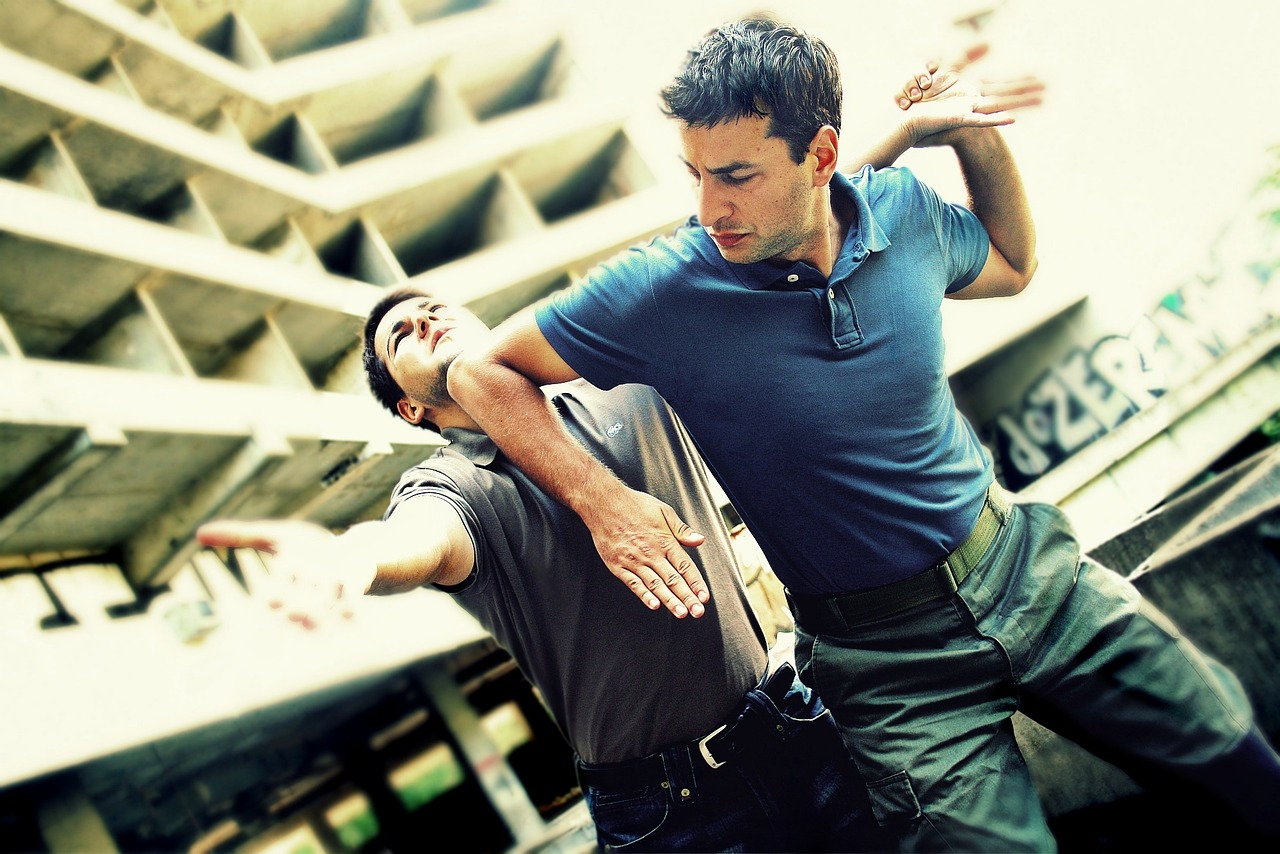
Implementing Cardio Workouts
This article explores effective strategies to enhance your self-defense training, ensuring you maximize your learning and build confidence in your abilities while preparing for real-life situations.
Establishing specific, measurable goals for your self-defense training can significantly enhance your focus and motivation, allowing you to track your progress and stay committed to your practice.
The environment in which you train plays a crucial role in your learning experience. Selecting a supportive, safe, and well-equipped space can elevate your performance and comfort level during practice.
A skilled instructor can provide invaluable feedback, tailored techniques, and safety measures. Researching and selecting a qualified mentor is essential for effective self-defense training.
Understanding an instructor's background, certifications, and experience helps ensure you're receiving quality training that aligns with your self-defense goals and needs.
Developing a positive relationship with your instructor fosters open communication, making it easier to ask questions and receive constructive feedback throughout your training.
Practicing self-defense techniques in realistic scenarios prepares you for actual encounters. Integrating situational drills into your training can enhance your reaction time and decision-making skills.
Consistent review of techniques is vital for retention and mastery. Scheduling regular practice sessions allows you to refine your skills and build muscle memory, crucial for effective self-defense.
Recording your training sessions for later review can provide insights into your technique and areas for improvement, allowing for more targeted practice and enhanced performance.
Partner drills promote teamwork and allow you to practice techniques against a live opponent, which helps simulate real-life situations and improves your adaptability in self-defense scenarios.
Physical fitness is a key component of effective self-defense. Incorporating strength, flexibility, and endurance training into your routine enhances your overall performance and resilience during self-defense situations.
Cardiovascular fitness is not just about looking good; it's about being able to perform when it counts. Imagine being in a high-pressure situation where your heart is racing, and your body is screaming for oxygen. That's where cardio workouts come into play. By regularly incorporating cardio into your training regimen, you can significantly boost your stamina, making you more resilient during both training sessions and real-life encounters.
Engaging in activities such as running, cycling, or swimming can enhance your endurance levels, allowing you to maintain energy throughout lengthy self-defense drills or unexpected confrontations. Think of it like preparing for a marathon instead of a sprint; the longer you can maintain your energy, the better your chances of successfully navigating a challenging situation.
To get the most out of your cardio workouts, consider the following:
- Variety is Key: Mix different forms of cardio to keep things interesting. This could include interval training, long-distance runs, or even dance classes.
- Consistency Counts: Aim for at least 3-4 cardio sessions a week to build a solid foundation of endurance.
- Track Your Progress: Use apps or a fitness journal to monitor your improvements and keep yourself motivated.
By making cardio a regular part of your self-defense training, you'll find that not only do you feel more energized, but your confidence in handling real-world situations will soar. After all, being fit is not just about aesthetics; it's about being prepared for whatever life throws your way.
Building strength enhances your ability to execute techniques effectively and increases your confidence in physical confrontations, making it a crucial aspect of your self-defense training regimen.
Q1: How often should I do cardio workouts for self-defense training?
A1: Aim for at least 3-4 times a week, focusing on a mix of high-intensity interval training and steady-state cardio to build endurance.
Q2: Can I combine strength training with cardio?
A2: Absolutely! Combining both will give you a well-rounded fitness regimen that enhances your self-defense capabilities.
Q3: What types of cardio are most effective for self-defense?
A3: Activities that mimic real-life movements, such as running, cycling, or even martial arts classes, are excellent choices for building endurance.
Q4: How can I track my progress in cardio workouts?
A4: You can use fitness apps, wearable devices, or a simple journal to log your workouts and improvements over time.

Strength Training for Self-Defense
This article explores effective strategies to enhance your self-defense training, ensuring you maximize your learning and build confidence in your abilities while preparing for real-life situations.
Establishing specific, measurable goals for your self-defense training can significantly enhance your focus and motivation, allowing you to track your progress and stay committed to your practice.
The environment in which you train plays a crucial role in your learning experience. Selecting a supportive, safe, and well-equipped space can elevate your performance and comfort level during practice.
A skilled instructor can provide invaluable feedback, tailored techniques, and safety measures. Researching and selecting a qualified mentor is essential for effective self-defense training.
Understanding an instructor's background, certifications, and experience helps ensure you're receiving quality training that aligns with your self-defense goals and needs.
Developing a positive relationship with your instructor fosters open communication, making it easier to ask questions and receive constructive feedback throughout your training.
Practicing self-defense techniques in realistic scenarios prepares you for actual encounters. Integrating situational drills into your training can enhance your reaction time and decision-making skills.
Consistent review of techniques is vital for retention and mastery. Scheduling regular practice sessions allows you to refine your skills and build muscle memory, crucial for effective self-defense.
Recording your training sessions for later review can provide insights into your technique and areas for improvement, allowing for more targeted practice and enhanced performance.
Partner drills promote teamwork and allow you to practice techniques against a live opponent, which helps simulate real-life situations and improves your adaptability in self-defense scenarios.
Physical fitness is a key component of effective self-defense. Incorporating strength, flexibility, and endurance training into your routine enhances your overall performance and resilience during self-defense situations.
Cardiovascular fitness improves your stamina, allowing you to maintain energy levels during extended training sessions or real-life encounters, ensuring you can respond effectively when needed.
Building strength is not just about lifting weights; it's about empowering yourself to handle unexpected situations with confidence. When you engage in strength training, you're essentially preparing your body to execute self-defense techniques more effectively. Think of your muscles as the engine of a car; the more powerful the engine, the better the performance. For self-defense, this means you can react quickly and efficiently when faced with a threat.
Incorporating strength training into your regimen can include exercises such as squats, deadlifts, and push-ups, which target multiple muscle groups and enhance overall body strength. Here’s a quick breakdown of how different strength training exercises can help:
| Exercise | Benefits |
|---|---|
| Squats | Enhances leg strength, crucial for mobility and stability. |
| Deadlifts | Builds core and back strength, vital for maintaining posture during confrontations. |
| Push-Ups | Improves upper body strength, aiding in defensive maneuvers. |
Moreover, strength training doesn't just boost your physical capabilities; it also plays a significant role in enhancing your mental resilience. As you see improvements in your strength, you'll likely experience a boost in self-confidence, which is invaluable in self-defense situations. Remember, being strong is not just about physical power; it’s about having the confidence to stand your ground.
So, whether you’re lifting weights at the gym or using your body weight at home, make strength training a consistent part of your self-defense preparation. It’s like sharpening a knife; the more you practice, the more effective you become.
- How often should I train for self-defense? Consistency is key! Aim for at least two to three sessions per week to build and maintain your skills.
- Do I need prior experience to start self-defense training? Absolutely not! Self-defense training is designed for all skill levels, so you can start from scratch.
- What should I wear to self-defense training? Comfortable, flexible clothing and supportive footwear are ideal to allow for a full range of motion.
- Can self-defense training help with confidence? Yes! As you learn and practice techniques, your confidence in handling real-life situations will grow.
Frequently Asked Questions
- What are the benefits of setting clear goals for my self-defense training?
Setting clear goals helps you focus your efforts and stay motivated. It allows you to track your progress and ensures that your training sessions are purposeful. Think of it like having a roadmap for your journey; without it, you might wander aimlessly!
- How do I choose the right training environment?
The right training environment should be safe, supportive, and well-equipped. A good space can significantly enhance your learning experience. Imagine trying to learn to swim in a kiddie pool versus a deep end – the environment makes all the difference!
- What should I look for in a qualified self-defense instructor?
When searching for an instructor, check their credentials, experience, and teaching style. A qualified instructor will not only teach you techniques but also provide personalized feedback. It's like finding a good coach; they can elevate your game!
- Why is practicing realistic scenarios important?
Incorporating realistic scenarios into your training prepares you for actual encounters. It sharpens your reaction time and decision-making skills, making your practice more relevant. Think of it as a dress rehearsal before the big performance!
- How often should I review self-defense techniques?
Regularly reviewing techniques is crucial for retention and mastery. Aim for consistent practice sessions to refine your skills and build muscle memory. Just like any skill, the more you practice, the better you get!
- What role does physical fitness play in self-defense?
Physical fitness is essential for effective self-defense. It enhances your strength, flexibility, and endurance, which are all critical during confrontations. Think of it as building a solid foundation for a house; it needs to be strong to withstand any storm!
- How can cardio workouts improve my self-defense training?
Cardiovascular fitness boosts your stamina, allowing you to maintain energy during extended training or real-life situations. It’s like having a full tank of gas – you want to make sure you can go the distance when it counts!
- Is strength training necessary for self-defense?
Absolutely! Building strength enhances your ability to execute techniques effectively and boosts your confidence in confrontations. It’s like having a powerful tool in your toolbox; the right tool makes all the difference!



















